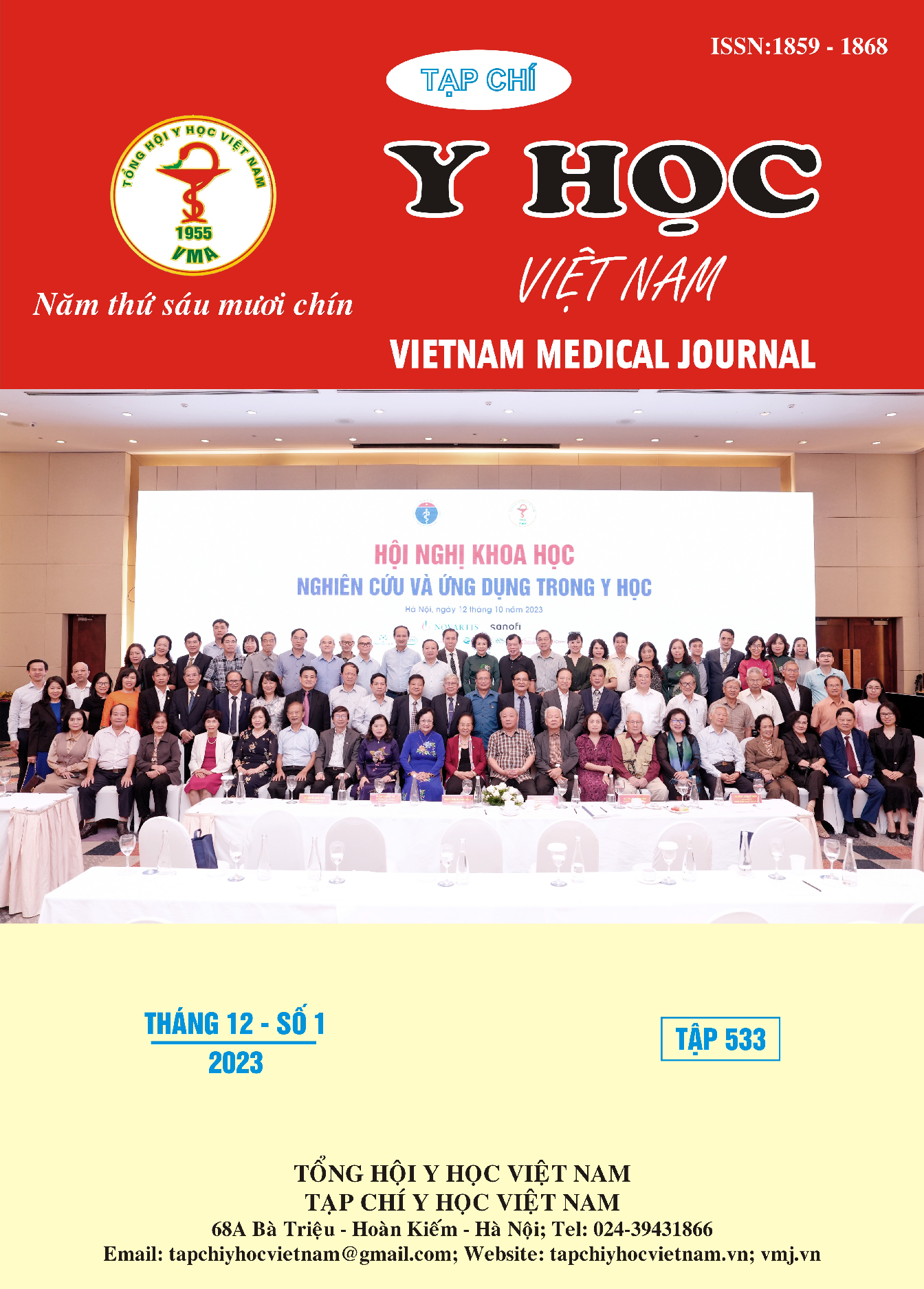ASSESSMENT OF FACTORS ON MULTI-SLICES CT RELATED TO PERCUTANEOUS NEPHROLITHOTOMY OF HIGH URINARY STONE
Main Article Content
Abstract
Purposes: To evaluate the factors on multislice computed tomography related to percutaneous lithotripsy of high urolithiasis. Material and methods: A cross-sectional description study was performed in 35 patients with indications and percutaneous lithotripsy at Hanoi Medical University Hospital and had multi-slices computed tomography before percutaneous lithotripsy from June 2022 to February 2023. Evaluation of factors on MSCT related to 2 main stages of percutaneous lithotripsy procedure: 1) stage of lithotripsy tunneling including factors such as stone location, renal parenchymal thickness, distance from the skin to the stone, degree of dilatation of the excretory tract, congenital abnormalities of the urinary tract, of the renal blood vessels, 2) the stage of lithotripsy procedure including factors such as the number of stones, the size, surface area, density of stones. Results: there were 22 men/13 women, the average age was 53.4 ± 12.0, the prevalence of kidney stones was mainly from 30-60 years old. Stones were mainly in more than one location (renal pelvis + calyx groups), the stone size was mainly 20-30mm (accounting for 57.1%), the surface area was mainly <10cm2 (accounting for 88.6%), the surface area has closely related to lithotripsy time and stone cleanliness with p<0.05. The proportion of stones is mainly >1000 HU (accounting for 91.4%). Anatomical changes of the two renal arteries account for 20% and abnormalities of renal rotation account for 2.9%. Conclusion: Multislice computed tomography provides important, essential information regarding the stages of percutaneous lithotripsy of high urolithiasis, thereby helping surgeons define pre-litholithic strategies.
Article Details
Keywords
urolithiasis, percutaneous lithotripsy, multislice computed tomography
References
2. Smith RC, Rosenfield AT, Choe KA, et al. Acute flank pain: comparison of non-contrast-enhanced CT and intravenous urography. Radiology. 1995; 194 (3): 789-794. doi:10.1148/ radiology.194.3.7862980
3. Tiselius HG, Andersson A. Stone burden in an average Swedish population of stone formers requiring active stone removal: how can the stone size be estimated in the clinical routine? Eur Urol. 2003;43(3):275-281.
4. Shaker H, Ismail MAA, Kamal AM, et al. Value of Computed Tomography for Predicting the Outcome After Percutaneous Nephrolithotomy. Electron Physician. 2015;7(7): 1511-1514. doi: 10.19082/1511
5. Đào Đức Phin. Kết Quả Điều Trị Sỏi Thận Bán San Hô Bằng Tán Sỏi qua Da Đường Hàm Nhỏ Tại Bệnh Viện Đại Học Y Hà Nội. Luận văn chuyên khoa cấp II. Đại học Y Hà Nội;2019.
6. Hoàng Long. Kết quả tán sỏi qua da đường hầm nhỏ tư thế nằm nghiêng dưới hướng dẫn của siêu âm. Tạp chí nghiên cứu y học Trường Đại học Y Hà Nội; tập 134 tháng 10 -2020, tr100-115.
7. Bùi Trường Giang. Đánh Giá Kết Quả Tán Sỏi qua Da Đường Hầm Nhỏ Điều Trị Sỏi Thận Tại Bệnh Viện Đa Khoa Đức Giang Giai Đoạn 2017-2021. Luận văn chuyên khoa cấp II. Đại học Y Hà Nội;2021.
8. Gücük A, Uyetürk U, Oztürk U, Kemahli E, Yildiz M, Metin A. Does the Hounsfield unit value determined by computed tomography predict the outcome of percutaneous nephrolithotomy? J Endourol. 2012;26(7):792-796. doi:10.1089/end.2011.0518


